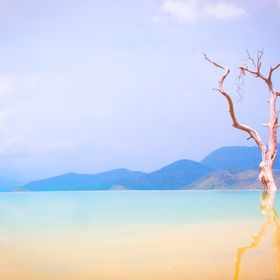

nellycarr
FollowLucha libre. Matrushka toy.
2014
Mexico
Views
803
Likes
Awards
Top Shot Award
Featured
Achievement in Originality
Peer Award
Superb Composition
Outstanding Creativity
Top Choice
Absolute Masterpiece
Magnificent Capture
Top Ranks
Categories
Same photographer See allBehind The Lens
Discover more photos See all
Behind The Lens
Location
This photo was taken in my home studio in Mexico, with an improvised light tent made with fabrics, papers, cardboard and sunlight.Time
It was a bright sunny day - 10 am to be precise - with a very harsh sunlight coming in from the window.Lighting
I was looking for dramatic shadows, a creative focus and very vivid colors, so I decided to use and play with the natural light coming through the window and the light tent. I didn't use spotlights or any kind of artificial lights, just a basic homemade reflector.Equipment
Canon 50D, Canon EF 28-135mm f/3.5-5.6 IS USM lens, tripod, homemade reflectors and light tent.Inspiration
Lucha Libre and the Matryoshka Principle A matryoshka doll (from Russian ????????/m??tr???k?) refers to a set of wooden dolls of decreasing size placed one inside another, which separates top from bottom to reveal a smaller figure of the same sort inside and so on, and it was invented in 1890 by Vasily Zvyozdochkin from a design by Sergey Malyutin inspired by a Japanese doll from Honshu (between a daruma doll or fukuruma nesting doll). The name and design connote matriarchy and the number of nested figures is traditionally not less than five. Much of the artistry is in the elaborate painting of each doll which often follow a theme. The traditional outer layer is a woman dressed in a sarafan - a long traditional Russian peasant dress - but nowadays Modern artists are creating many new styles of nesting dolls including fairy tale characters, animals, robots, religious items, politicians, musicians, athletes, astronauts, movie stars, and famous wrestlers. Matryoshkas are used metaphorically as a design paradigm, known as the "matryoshka principle", which denotes a recognizable relationship of "object-within-similar-object" that appears in the design of many other natural, physical and crafted objects. This principle has been employed in different concepts and applications like the Matrioshka brain (a hypothetical megastructure of immense computational capacity proposed by Robert Bradbury) and the MKV or Matroska multimedia container format (alluding to the container being able to hold many different types of content streams). One of the most popular references of Mexican culture is the Lucha Libre (meaning "free wrestling"), a term used in Mexico for a form of professional wrestling. The Lucha libre is characterized by colorful masks, rapid sequences of holds and "high-flying" maneuvers. The Máscaras (masks) that luchadores wear have become iconic symbols of Mexican culture too, but that doesn’t mean that every Mexican wrestler uses one. The wearing of Máscaras has a very special significance and they have been used dating back to the beginnings of Lucha Libre in the early 20th century. Masks are colorfully designed to evoke and to identify a specific luchador during a performance. Máscaras have a huge importance, some even consider them “sacred” or symbols of “power”, so much so that fully removing an opponent's mask during a match is grounds for disqualification, to win a mask against an opponent means power and authority, and to loss a mask may signify the loss of identity or the end of the career of a wrestler. Lucha libre wrestlers, known as luchadores, usually come from extended wrestling families with a long historical trajectory, same sociocultural backgrounds, a similar wrestling style, ideologies and even names and máscaras (the reproduction of a sociocultural condition).Editing
I adjusted a little bit the brightness and contrast.In my camera bag
I carry a little bag with my Canon 50D, a Canon EF 28-135mm lens, a wide angle 24 mm lens, a fujifilm finepix xp60 camera, a lomography action sampler camera, batteries, charger, SD cards and USB cables.Feedback
Be prepared to play and take risks while you're taking photos inside, sometimes harsh sunlight coming into a closed space may be a useful resource to create new types of lighting and shadow effects.














































